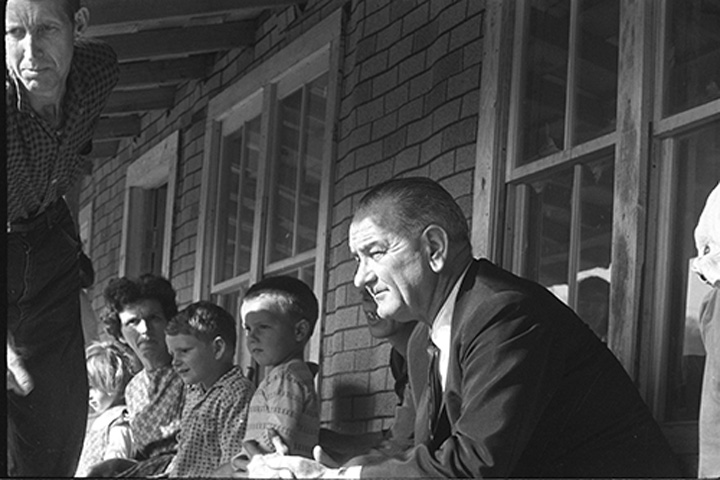Advertisement
The War On Poverty, 50 Years On
ResumeFifty years after America’s declaration of war on poverty, we’ll look at what’s been won, and what lost. Look for new thinking.

Lyndon Johnson grew up poor, and when he became President of the United States, he went after poverty. Declared, 50 years ago today, his War on Poverty. So here we are, half a century on. And there is poverty aplenty. And middle class fear of joining the ranks of the impoverished. With government aid factored in, poverty has fallen. Without that aid, it’s risen – from one in four Americans to almost a third. While the top tier of earners has just taken off. So what now? This hour On Point: poverty in America, 50 years after LBJ declared war on poverty.
-- Tom Ashbrook
Guests
Julian Zelizer, professor of history and public affairs at Princeton University. (@julianzelizer)
Melissa Boteach, director of poverty prosperity program at the Center for American Progress. Coordinates "Half In Ten: The Campaign to Cut Poverty in Half in Ten Years." (@MBoteach)
Lee Ohanian, professor of economics, University of California Los Angeles. Where he director of the Ettinger Family Program in Macroeconomic Research.
From Tom's Reading List
Wall Street Journal: Alternative Poverty Rate Stuck at 16% — "In September, Census reported the nation’s official poverty rate, which stood unchanged at 15% of the population in 2012—well above the 12.5% level in 2007, before the recession. Some 46.5 million Americans were below the official poverty line of $23,492 for a family of four. On Wednesday, Census reported a more comprehensive measure — one designed to account for anti-poverty programs, regional differences in housing costs and necessary out-of-pocket medical expenses — that showed that 49.7 million people were “poor,” an increase of about 3 million from the official measure. The supplemental poverty rate was 16% in 2012, not significantly different from 16.1% in 2011."
The Nation: Fifty Years Later, the War on Poverty Must Be Renewed — "But there is a still a long way to go before achieving President Johnson’s stated objective: 'total victory.' The tragic misadventure in Vietnam distracted the administration and the country from the one war President Johnson actually did declare, and more recent decades have seen the war on poverty co-opted by the proponents of austerity and turned into an unrelenting war on the poor."
Washington Post: Paul Ryan’s claim that $15 trillion has been spent on the war on poverty — "The poverty rate is determined by the U.S. Census, and generally such government figures are fairly authoritative. The poverty rate is now about 15 percent, and the last time it was this high was in 1993. Ryan spokesman Conor Sweeney said that was the year that Ryan was referencing when he said 'in a generation.' (Okay, a generation is generally defined as 30 years, but 20 may be fine for government work.)"
More On The War On Poverty From Around The Web
This program aired on January 8, 2014.